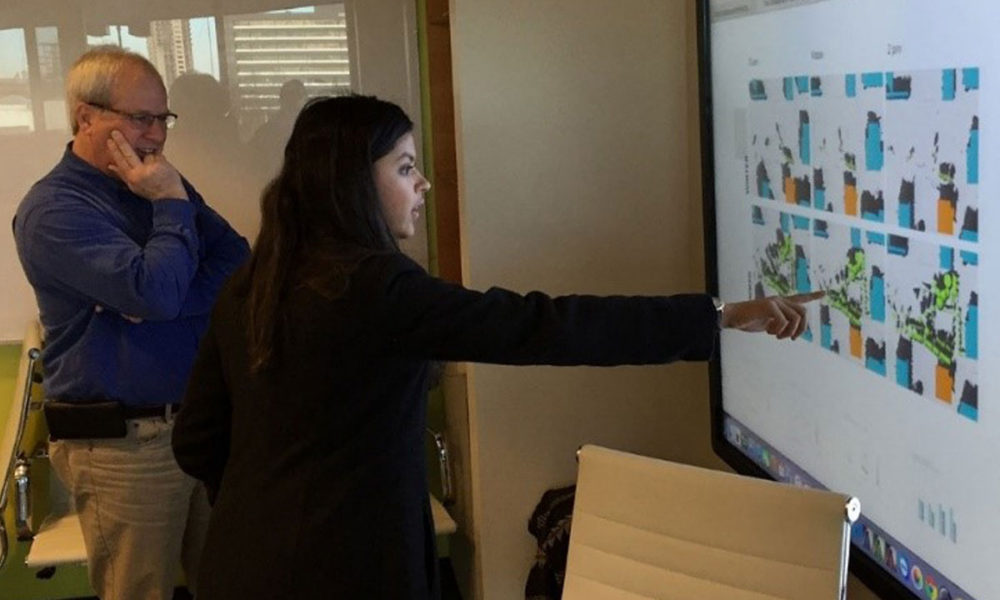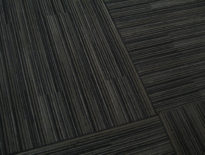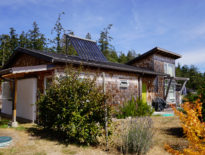Atlanta and the South East are generally perceived as being the last ones to adopt the latest performance-related codes or certification. Nothing speaks more to this than the fact that we are still on the ASHRAE 90.1 2007 code in the year 2016.
My first encounter of Living Building Challenge was during my visit to Vancouver when I toured the Van Dusen Botanical Garden Center. As an architect, the beautiful building made my heart throb. As a sustainability consultant, I wanted to take that challenge to the hot and humid climate of the South East. I wanted to accomplish this net positive design in a place where natural ventilation is only applicable 2 months out of the year, and only if the occupant is immune to the pollen!
After I came back to Atlanta, I knew I wanted to learn more. I went through ILFI’s Ambassador Program and started looking into the different Petals. My work at Pattern r+d allowed me an opportunity to teach a 5-year Architecture Studio at Kennesaw State University. Me and my colleague Patrick Chopson, co-taught this studio and focused it around the Living Building Challenge. Being a parametric expert, I worked with the students to be fluent in the language of ‘Grasshopper’ (a parametric design environment) to create new ways of design to accomplish targets like the LBC. All the students researched different petals in teams and started creating the optimal design solutions. The entire studio was paperless and a live link with the students work can be found at https://livingbuildingstudio.wordpress.com/
Soon after finishing the first semester studio, the first Living Building Challenge project of Atlanta was announced. Pattern r+d pursued The Georgia Tech Living Building Challenge project and made it to the final stage of the competition. During the three-month competition, I worked as a parametric sustainability consultant on the team alongside architects, mechanical engineers, landscape designers, cost estimators, researchers and more. As excited as I was to be involved in the competition, I was not quite certain how a team with 3 architecture offices, 2 mechanical engineering offices, and 2 landscape design offices was going to come together. Within two weeks of working on the competition as a full team, I observed an integration that I had not seen before. We were using everything to stay connected and be accessible to support each aspect of the competition through phone calls, meetings, slack, posts, and e-mails.
The process we followed in this competition was truly unique and performance driven with every aspect. For instance, Pattern r+d ran a full scale massing, orientation, glazing percentage and shading optimization to come up with a massing. This meant that we tested over 1000 options with 10 different massing types, 8 different orientations, 5 different glazing percentages and 3 different shading types. As we tested these options, it was critical that we look to optimize beyond energy. Thus the optimization was done for energy, daylight, glare and thermal comfort.
Pattern made sense of the shared results of the optimization study with the team of architects and consultants in an interactive web tool. This was a crucial action that allowed the team to make rational decisions by giving them the ability to see all the options, and narrow down the alternatives.
A similar parametric approach was used for other aspects of the design, like the façade. With inputs from all, the façade shading options below were tested.
The team then settled on 4 key performance metrics:
1) EUI (With a break down of heating and cooling)
2) Daylight
3) Thermal Comfort (Percent People Satisfied)
4) Glare
Once we got all the results with all the metrics, Pattern r+d created a custom interactive tool to be used by the design team.
A live version of this interactive tool is found here.
If we are studying the South façade, for instance, and want to design the façade for the lowest glare and highest daylight, we would be left with only two options shown below.
If we further add it to have the lowest energy and highest thermal comfort, we are only left with one option.
This tool was able to provide a quick and easy understanding of performance guidance specific to the building. The next step was to start adding automated shading, electrochromic glass, and manual interior blinds to the mix of options to test for glare reduction for visual comfort.
As a strong advocate of the Mcleamy’s curve and integrated teams, the format of the Living Building Challenge competition encouraged a close working relationship with the design team, mechanical engineers, landscape designers and cost estimators. Now, as I work on other high performance projects in the South East, I encounter the same process. I can see the entire team becoming more informed and focused in building performance and health as it relates to its occupants. The Living Building Challenge is certainly bringing a shift in our thinking.










